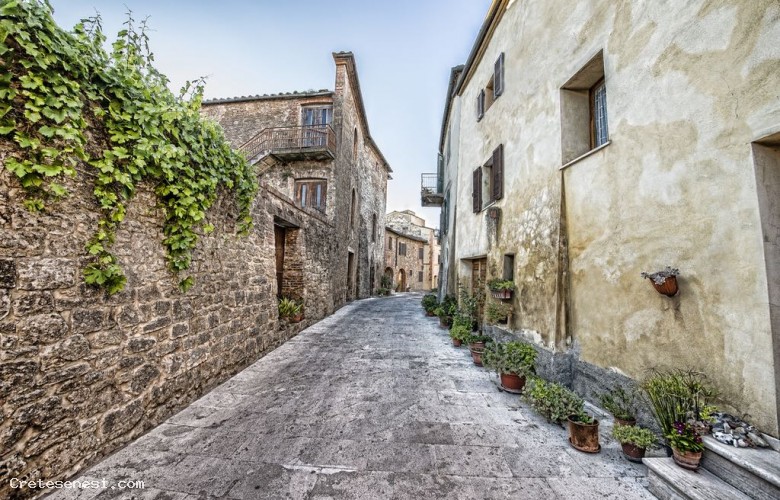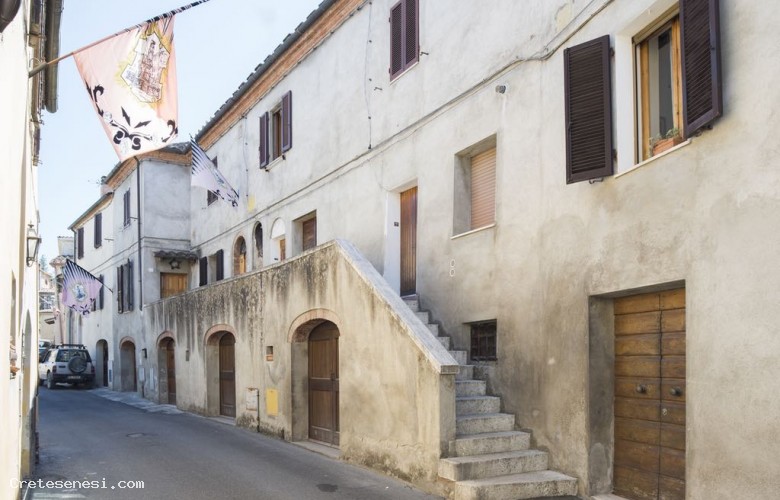Palaces & Monuments
Antica via Bartolenga
ASCIANO LISTEN THE AUDIO GUIDE
LISTEN THE AUDIO GUIDE
.jpg)



Until the first half of the 15th century, this ancient road corresponded to the route of the Lauretana, a pilgrimage road, which led to Loreto where the religious complex of the Santa Casa is located and to the landing places of the Adriatic Sea, for trade.
This road began, as it does today, from Piazza del Grano and ended at Pianella, in front of Palazzo Tolomei.
Its route originally ran alongside the walls of the village, but with the extensive reconstruction of the walls in the 15th century and the change in the defensive policies of the Republic of Siena, it was incorporated into the village.
In the second half of the 15th century, the local government, in agreement with the city of Siena, radically changed the urban layout of Asciano, transferring the route of the Via Lauretana upstream from the town. The new route entered the village through the new Porta Senese and rejoined the old route, in front of the Hospitale di San Michele adjacent to Palazzo Tolomei.
This decision, at the same time as the construction of the fountain in Piazza del Grano, transformed Via Bartololenga into an internal road that, skirting the area of the kilns for the production of pottery, directly connected the market square and the Palazzo del Podestà to Palazzo Tolomei, a family that was very influential in Asciano as in Siena at the time.
Until the first half of the 15th century, this ancient road corresponded to the route of the Lauretana, a pilgrimage road, which led to Loreto where the religious complex of the Santa Casa is located and to the landing places of the Adriatic Sea, for trade.
This road began, as it does today, from Piazza del Grano and ended at Pianella, in front of Palazzo Tolomei.
Its route originally ran alongside the walls of the village, but with the extensive reconstruction of the walls in the 15th century and the change in the defensive policies of the Republic of Siena, it was incorporated into the village.
In the second half of the 15th century, the local government, in agreement with the city of Siena, radically changed the urban layout of Asciano, transferring the route of the Via Lauretana upstream from the town. The new route entered the village through the new Porta Senese and rejoined the old route, in front of the Hospitale di San Michele adjacent to Palazzo Tolomei.
This decision, at the same time as the construction of the fountain in Piazza del Grano, transformed Via Bartololenga into an internal road that, skirting the area of the kilns for the production of pottery, directly connected the market square and the Palazzo del Podestà to Palazzo Tolomei, a family that was very influential in Asciano as in Siena at the time.